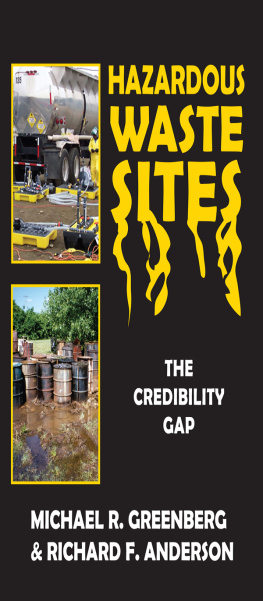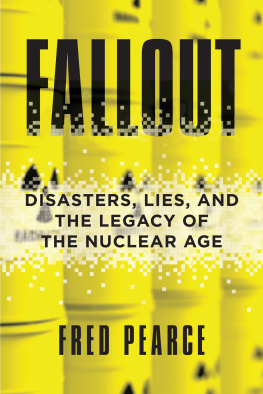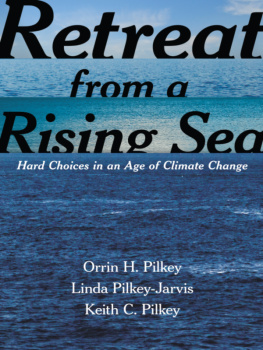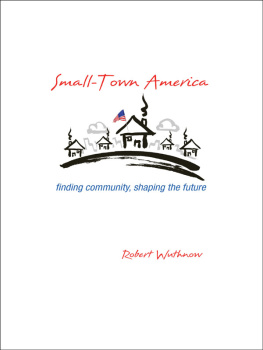First published 1998 by Transaction Publishers
Published 2017 by Routledge
2 Park Square, Milton Park, Abingdon, Oxon OX14 4RN
711 Third Avenue, New York, NY 10017, USA
Routledge is an imprint of the Taylor & Francis Group, an informa business
Copyright 1998 Taylor & Francis.
All rights reserved. No part of this book may be reprinted or reproduced or utilised in any form or by any electronic, mechanical, or other means, now known or hereafter invented, including photocopying and recording, or in any information storage or retrieval system, without permission in writing from the publishers.
Notice:
Product or corporate names may be trademarks or registered trademarks, and are used only for identification and explanation without intent to infringe.
Library of Congress Catalog Number: 97-15480
Library of Congress Cataloging-in-Publication Data
Inhaber, Herbert, 1941
Slaying the NIMBY dragon / Herbert Inhaber.
p. cm.
Includes bibliographical references and index.
ISBN 1-56000-219-0 (cloth)
1. NIMBY syndromeUnited States. 2. Land useUnited StatesPlanningCitizen participation. 3. Land useEnvironmental aspectsUnited States. I. Title.
HD205.I54 1997
333.7317dc21
97-15480
CIP
ISBN 13: 978-1-56000-219-2 (hbk)
This book is dedicated to my wife, Donna, who has helped me through thick and thin with great encouragement.
A NIMBY Overview:
How it has Prevented the Establishment of Needed Facilities
Advanced societies around the world are facing a dilemma of gigantic proportions: What to do with all the facilities that everyone desires in principle, but wants to keep out of their own block? The phenomenon is called NIMBYNot In My Back Yard.
It may seem to be a far-fetched problem that does not affect most of us. Yet it looms bigger than we imagine. Hundreds of millions of dollars, if not billions, have been spent to overcome it. Some of the most talented engineers and scientists, whose skills could be applied to more productive activities, have devoted years to defeating it. And it still remains.
The dragons of legend used to roam the countryside, wreaking destruction wherever they wanted. Because of the pervasive nature of NIMBY, I have labeled it a dragon in the title of this book. It has indeed burned up the detailed plans of administrators, politicians, and scientists.
Nobody knows exactly how much damage the mythical dragons caused. But the problems produced by NIMBY are well documented. In the rest of this chapter, I will give only a few examples. A complete listing might fill a library shelf.
At least one dragon would continue to ravage villages if it had not been for St. George, who slew it. A mere compilation of NIMBY problems would be inadequate without a proposed solution. The modern-day analogy to St. Georges swordthe reverse Dutch auctionwill be revealed later in this book. Briefly, it attempts to use both environmental science and economics to wipe out NIMBY, conclusively. I believe that it will work, and we can go on to better things.
Acronyms and Definitions
The NIMBY field is full of abbreviations. Lets go over them briefly, so we can understand what people have said on the subject. However, in the rest of this book I will try to keep acronyms to a minimum.
NIMTOONot In My Term Of Officeis sometimes used by elected officials confronted by a NIMBY decision. That is, we will solve the NIMBY problem just as soon as I retire from this office. The phrase is a bit unfair to politicians, who are often merely reflecting what their constituents want or do not want.
LULUsLocally Unwanted Land Usesis the generic term for all the facilities to which people object: landfills, prisons, radioactive waste sites, AIDS treatment centers, and so on. This acronym is used extensively, since it encompasses all the facilities that create NIMBY opposition.
The nuclear energy field, subject of much NIMBY controversy, has spawned its own jargon. Two phrases are low-level and high-level waste.
The Nuclear Regulatory Commission and the Environmental Protection Agency have their own precise definitions of these two terms. We can think of low-level wastes as gloves or resins used in a reactor, and needles that might have contained some radioactive tracer material in medicine. These wastes are slightly radioactiveyou could be in a room with them without suffering much increased risk.
High-level wastes come only from nuclear reactors. They are mostly the spent nuclear fuel rods from which electricity has been produced. These are highly radioactive. You would not want to go near where they were stored.
What about hazardous wastes, which seem to be related in some way to the two previous terms? Hazardous wastes are specific chemicals and compounds that have been identified by the Environmental Protection Agency and other regulatory bodies as posing some type of hazard to human health or the environment. The hazards vary considerably from one chemical to another.
The risks of all these sourceshazardous, low-and high-level wastesvary, depending on how close you are to them, and how many of these materials you breathe or drink. Most people are unhappy with any wastes in their back yard, whether those wastes are fairly benign or highly toxic.
For those who are unalterably opposed to undesirable facilities, ever, at any time, place or condition, other phrases exist. They are NIABYNot In Anybodys Back Yardand NOPENot On Planet Earth. The idea behind these phrases is that the wastes should not have been created in the first place.
Those seeking a solution to NIMBY might say:
Is it better to build a new prison that offers some chance of rehabilitation of prisoners? Or is it better to confine them to a century-old structure, overcrowded and under court order to be torn down?
Is it better to keep radioactive wastes in the back rooms of a hospital or a nuclear reactor, storage areas which were never designed to hold them for decades? Or is it better to build a special structure that will meet all environmental rules and regulations?
Calvin Brunner, a Virginia-based waste industry consultant and the author of several books on waste disposal, thinks NIMBY will gradually produce an overwhelming crisis. In an article entitled NIMBYists Put Society at Risk, he wrote: Will our inability to come to grips with pollution force revolution on us? [emphasis in original]there may be too much democracy in Americathis would eventually lead to anarchy[producing] a lack of respect for institutions, people in power and for everything and everyone.1
Could Brunner be exaggerating for the sake of effect? In this book, I avoid the name calling that has characterized much of the NIMBY debate. I avoid labeling as NIMBYists those who do not want undesirable facilities near them, even though Brunner does. I have a certain sympathy for them, as will be shown later. Name calling, regardless of the merits of the case, does nothing to produce a solution to NIMBY. A solution is what this book produces.
Being Canadian by birth, I am alert to NIMBY events there. Jim Temple, an official of a Canadian waste handling company, wrote: A couple of years ago, I had the pleasure of hearing a Mayor from a Nova Scotia municipality tell a most inspiring story of community activism. She told how she and her constituents put up a valiant struggle to keep a regional waste disposal site out of her community. The Mayor and her followers applied political leverage, recruited a sympathetic press and put in a lot of long hours of hard campaigning.2











